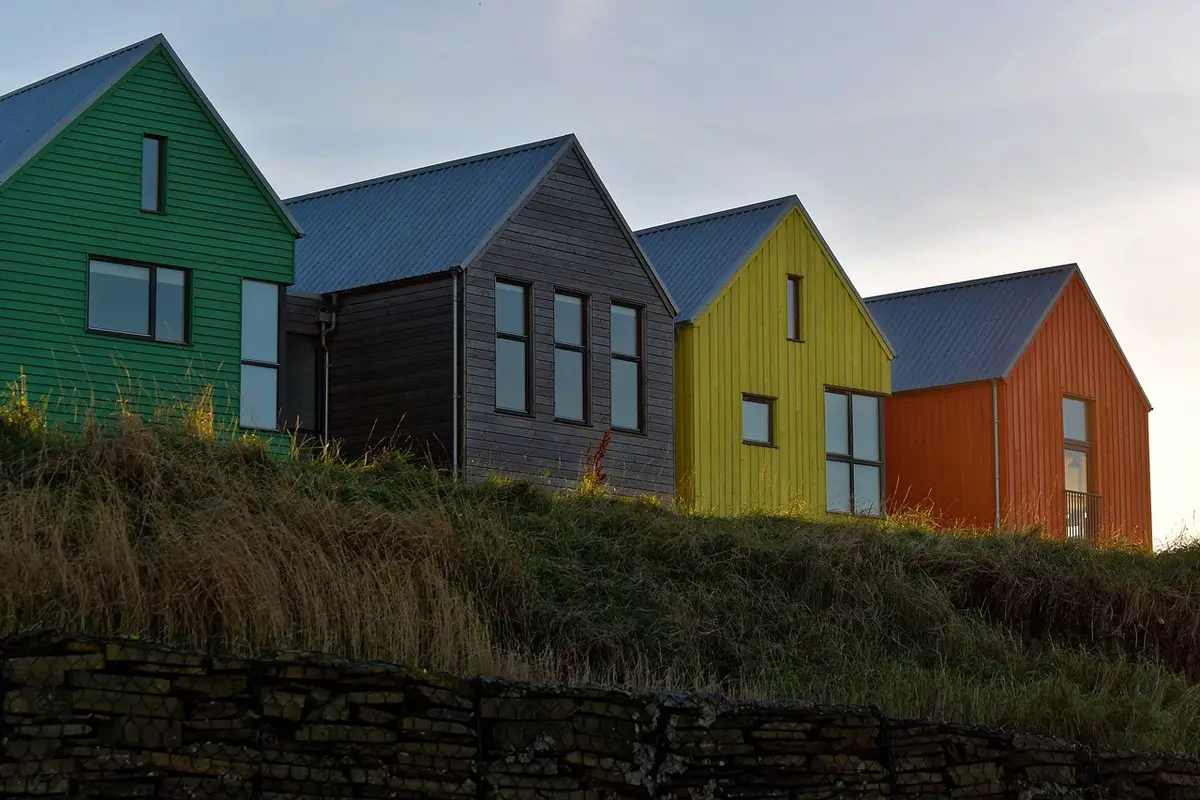Timber cladding in urban architecture design, Architectural wall exteriors, Property facade walling material
Timber Cladding in Urban Architecture
14 February 2024
In the heart of modern cities, amidst the concrete jungle and glass skyscrapers, a transformation is underway. A material, as ancient as architecture itself, is making a comeback in urban landscapes. Timber wall cladding, with its warmth and natural elegance, is being reimagined to blend tradition with modernity, creating buildings that are not only visually captivating but also environmentally responsive. This resurgence underscores a broader architectural trend: the fusion of traditional materials with contemporary design principles to meet the demands of the 21st century.
The Appeal of Timber in Urban Environments
Timber cladding offers a unique aesthetic appeal that stands in stark contrast to the often cold and impersonal materials like steel and concrete predominantly used in urban architecture. It brings a touch of nature into the city, creating a sense of warmth and inviting ambiance. The versatility of wood allows for a range of finishes, from rustic and textured to sleek and smooth, catering to diverse architectural styles and personal tastes. Moreover, timber cladding serves as a visual reminder of our connection to the natural world, fostering a sense of calm and well-being in urban settings.
Environmental Benefits and Sustainability
Beyond its aesthetic appeal, timber cladding is celebrated for its environmental credentials. Wood is a renewable resource, and when sourced responsibly, it can be an excellent choice for sustainable construction. Timber cladding acts as a carbon sink, storing carbon dioxide absorbed by the tree during its growth, thus playing a role in reducing the overall carbon footprint of buildings. Additionally, wood has natural insulation properties, contributing to energy efficiency by helping regulate indoor temperatures and reducing reliance on heating and cooling systems.
Innovations in Timber Technology
The integration of timber cladding in urban architecture has been facilitated by significant advancements in timber technology. Treatments and finishes have evolved to improve the durability and fire resistance of wood, making it suitable for external applications in urban environments. Engineered wood products and innovative fixing systems have also expanded the possibilities for timber cladding in high-rise buildings, where weight and structural integrity are critical considerations. These technological advancements ensure that modern timber cladding can meet the rigorous demands of urban construction, marrying the natural beauty of wood with the necessities of contemporary building standards.
Enhancing Urban Landscapes Through Timber Cladding
Across the globe, architects and designers are leveraging timber cladding to transform urban buildings, from residential complexes to commercial spaces and public facilities. One notable example is the use of timber cladding in facade renovations, where it breathes new life into outdated structures, adding character and modern appeal. New constructions also benefit from timber’s versatility, using it to create striking contrasts with traditional urban materials or to integrate buildings more harmoniously with their natural surroundings.
The Role of Timber Cladding in Urban Renewal Projects
Urban renewal projects provide a unique opportunity for integrating timber cladding into the fabric of the city. These projects often aim to revitalize areas that have fallen into disuse or disrepair, and the introduction of timber cladding can play a significant role in these transformations. By incorporating wood into the exteriors of buildings, developers can inject warmth and life into spaces that previously felt unwelcoming or obsolete. Timber cladding can be used to redefine public squares, residential areas, and commercial buildings, making them more inviting and attractive to residents and visitors alike. The material’s flexibility and aesthetic diversity make it an ideal choice for projects that aim to honor the historical context of an area while introducing modern design elements.
Timber Cladding and Urban Green Spaces
Another aspect of timber cladding’s role in urban architecture is its ability to complement and enhance urban green spaces. Parks, green roofs, and vertical gardens are becoming increasingly important in cities around the world, as they offer respite from urban density and contribute to the overall health and well-being of urban populations. Timber cladding can harmonize with these green spaces, providing a seamless transition between built environments and natural ones. Buildings adjacent to or incorporating green spaces can benefit from timber cladding, as it reinforces the connection to nature and supports the ecological aims of these projects.
Challenges and Considerations
While the benefits of timber cladding are manifold, its application in urban architecture is not without challenges. Concerns over durability, maintenance, and fire safety are paramount, especially in densely populated areas. However, with proper design, treatment, and maintenance strategies, these challenges can be effectively addressed. Selecting the right type of wood, along with appropriate treatments for weather and fire resistance, is crucial for ensuring the longevity and safety of timber-clad buildings in urban environments.
Timber & Its Role In Architecture
As urban areas continue to grow and evolve, the role of architecture in shaping sustainable, aesthetically pleasing, and livable environments becomes increasingly important. Timber cladding represents a powerful tool in this endeavor, offering a way to blend tradition with modernity and bring a piece of nature into the urban landscape. Through careful consideration and innovative design, timber cladding can help create buildings that are not only beautiful but also sustainable and harmonious with their surroundings. As we look to the future, the continued embrace of timber in urban architecture will undoubtedly play a crucial role in crafting the cities of tomorrow, making them more human, sustainable, and connected to the natural world.
Comments on this guide to timber cladding in urban architecture article are welcome.
Cladding
Facade Posts
Reasons to choose timber cladding for design
Natural slate rainscreen cladding system
Use of Aluminium in Architecture
Fire-Safe Aluminium Rainscreen Cladding
Residential Property
Comments / photos for the Timber cladding in urban architecture advice article page welcome





